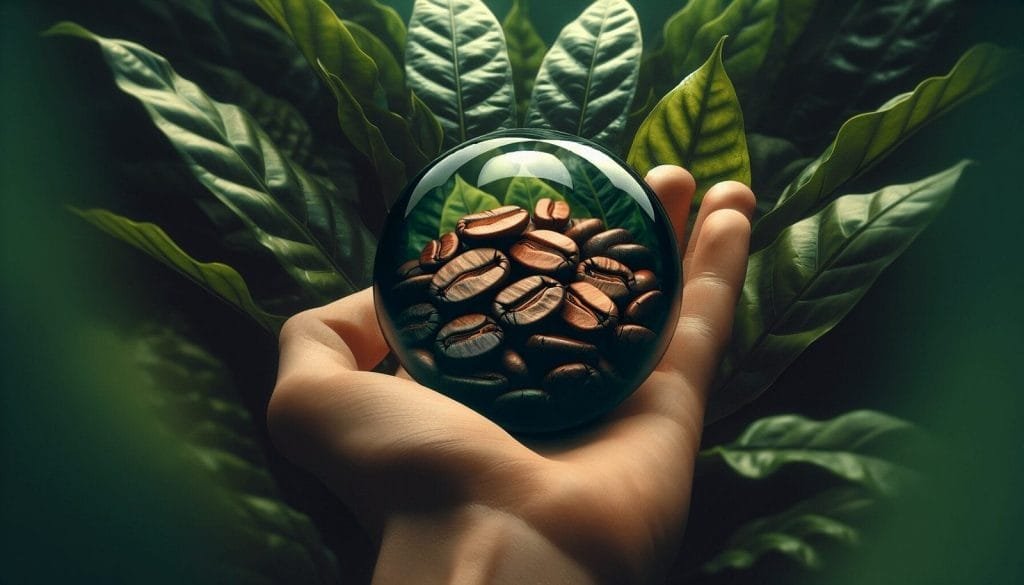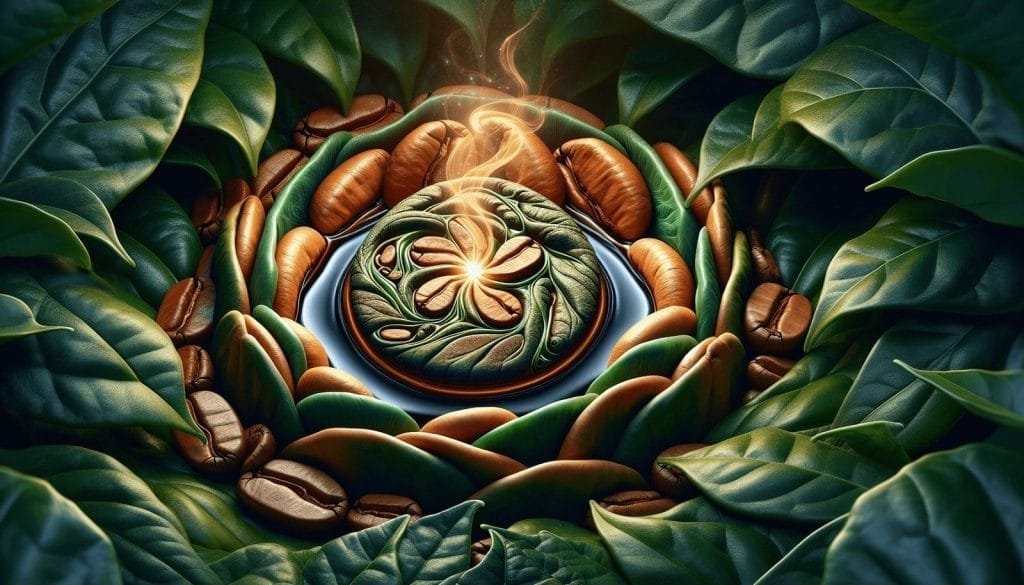Imagine the delicate aroma of freshly brewed coffee filling the air, and the tantalizing taste of your favorite cup of Joe on your lips. But have you ever wondered what lies beneath the surface of those beloved coffee beans? Do coffee beans have skins? Delve into the fascinating world of coffee beans as we unveil the secrets hidden within, from their rich flavors to the protective layers that surround them. Prepare to embark on a journey of discovery, where the seemingly ordinary bean transforms into a truly extraordinary brew.

The Anatomy of a Coffee Bean
Coffee beans, those magical little seeds that produce one of the world’s most beloved beverages, are not just simple solids. They have a complex structure, both inside and out, that contributes to their unique characteristics and flavors. To truly appreciate coffee, it is essential to understand the anatomy of a coffee bean, starting with its exterior.
Exterior of the Coffee Bean
The exterior of a coffee bean is known as the skin or the cherry, depending on the stage of the bean’s development. At the early stages, when the coffee bean is still part of a fruit, it is surrounded by a protective layer called the cherry. This cherry gives the coffee bean its vibrant color and acts as a shield, guarding the inner bean from external elements.
The Role of the Skin in Coffee Bean
The skin of a coffee bean plays a vital role in protecting and preserving the bean’s integrity. It acts as a barrier against pests, diseases, and environmental factors that could harm the bean. The skin also helps regulate the moisture content within the bean, preventing it from losing too much water during the drying process. Essentially, the skin acts as the first line of defense, ensuring that the coffee bean remains intact until it is ready for processing.
Composition of the Coffee Bean Skin
The coffee bean skin is composed of several layers, each serving a specific purpose. The outermost layer, known as the exocarp, provides a glossy and smooth appearance to the bean. Beneath the exocarp lies the mesocarp, a soft and jelly-like layer that surrounds the actual coffee bean. Finally, the endocarp, also known as the parchment, forms a protective shell around the coffee bean, safeguarding it during the drying process.
The Process of Coffee Bean Production
Now that we have explored the exterior of a coffee bean, it is time to delve into the fascinating journey coffee beans undergo during production. From harvesting the cherries to removing the bean’s skin, each step in the process plays a crucial role in determining the final quality and taste of the coffee.
Harvesting Coffee Cherries
Coffee cherries go through a meticulous process of ripening before they can be harvested. Farmers select the cherries when they reach their peak, typically when they turn a bright red color. This selective picking ensures that only the highest quality cherries are chosen, as they contain the most flavorful and mature beans.
Processing the Coffee Cherries
Once harvested, the coffee cherries undergo processing to separate the beans from the pulp and skin. There are two primary methods used in coffee processing: the dry method and the wet method.
In the dry method, the whole cherries are spread out under the sun to dry. The cherries shrink and lose moisture, allowing the beans to be easily removed. This method is often used in regions with limited access to water resources.
Conversely, the wet method involves removing the skin and pulp from the cherries before drying the beans. This method requires access to abundant water and is used in areas that prioritize quality and consistency. By mechanically removing the skin, the beans can be more efficiently dried and prepared for further processing.
Removing the Coffee Bean Skin
Regardless of the processing method used, the coffee bean skin needs to be removed to expose the precious bean within. This step is crucial as it allows the bean to be properly roasted, ground, and brewed to achieve the perfect cup of coffee. The removal of the skin can be done mechanically, using specialized machines, or manually, through a meticulous hand-picking process.
Coffee Bean Skin Variations
While coffee beans typically have a common structure and composition, variations in their skin can occur due to several factors. These variations can have a significant impact on the taste and overall quality of the coffee.
Natural Variations in Coffee Bean Skin
Natural variations in coffee bean skin can arise from genetic factors and different environmental conditions. Factors such as altitude, climate, and soil composition can influence the thickness, color, and texture of the skin. Coffee beans grown at higher altitudes, for example, often have a thinner and denser skin, which can enhance the flavors during brewing.
Induced Variations in Coffee Bean Skin
Coffee bean skin can also be intentionally manipulated through various processing techniques. This could involve altering the moisture content, temperature, or duration of the drying process. By manipulating these factors, coffee producers can create unique flavors, such as fruity, floral, or chocolate notes, through the modification of the bean’s skin.
The Significance of Coffee Bean Skin
The skin of a coffee bean may seem insignificant compared to the internal bean itself, but it plays a crucial role in the overall coffee experience. Understanding the significance of the coffee bean skin is essential for coffee enthusiasts and professionals alike.
Impact on Coffee Taste
The coffee bean skin contributes various flavors and aromas to the final cup of coffee. The sugars and organic compounds present in the skin interact with other components during the brewing process, resulting in a diverse range of taste profiles. Thicker skins, for example, may impart a bolder or earthier flavor, while thinner skins can produce a lighter and more delicate brew. The quality and type of processing also influence the taste by allowing unique characteristics to shine through.
Nutritional Value of Coffee Bean Skin
In addition to flavor, coffee bean skin also contains several nutritional benefits. It is rich in fiber, antioxidants, and other beneficial compounds that can contribute to overall health and well-being. The consumption of coffee beans with their skin intact allows for a more comprehensive and nutritious coffee experience, promoting a balanced and mindful approach to enjoying this beloved beverage.

The Effect of Coffee Bean Skin on Brewing
The presence or absence of the coffee bean skin can significantly impact the brewing process, influencing variables such as extraction rate and overall taste.
Brewing Methods and Coffee Bean Skin
Different brewing methods can extract flavors differently depending on the coffee bean skin’s presence. Methods that allow for prolonged contact between the water and coffee grounds, such as French press or cold brew, benefit from the skin’s inclusion. The skin acts as a buffer, slowing down the extraction process and yielding a more nuanced and complex cup of coffee.
Extraction Rate and Coffee Bean Skin
The extraction rate, or the speed at which flavors are extracted from the coffee grounds, can be affected by the presence or absence of the skin. Coffee beans with their skin intact may have a slower extraction rate, allowing for a more controlled and balanced extraction. Conversely, removing the skin can increase the extraction rate, resulting in a more rapid infusion of flavors into the brew.
Conclusion
The anatomy of a coffee bean encompasses not only its internal structure but also its external skin. Understanding the role and significance of the coffee bean skin is essential for appreciating the complexities of coffee and enhancing the overall coffee experience. From the coffee cherry’s protective shield to the variations in skin that contribute to unique flavors, the coffee bean skin is an integral part of the journey from farm to cup. So, the next time you savor your favorite cup of coffee, take a moment to ponder the intricate anatomy of the humble coffee bean and the remarkable contributions of its skin.




